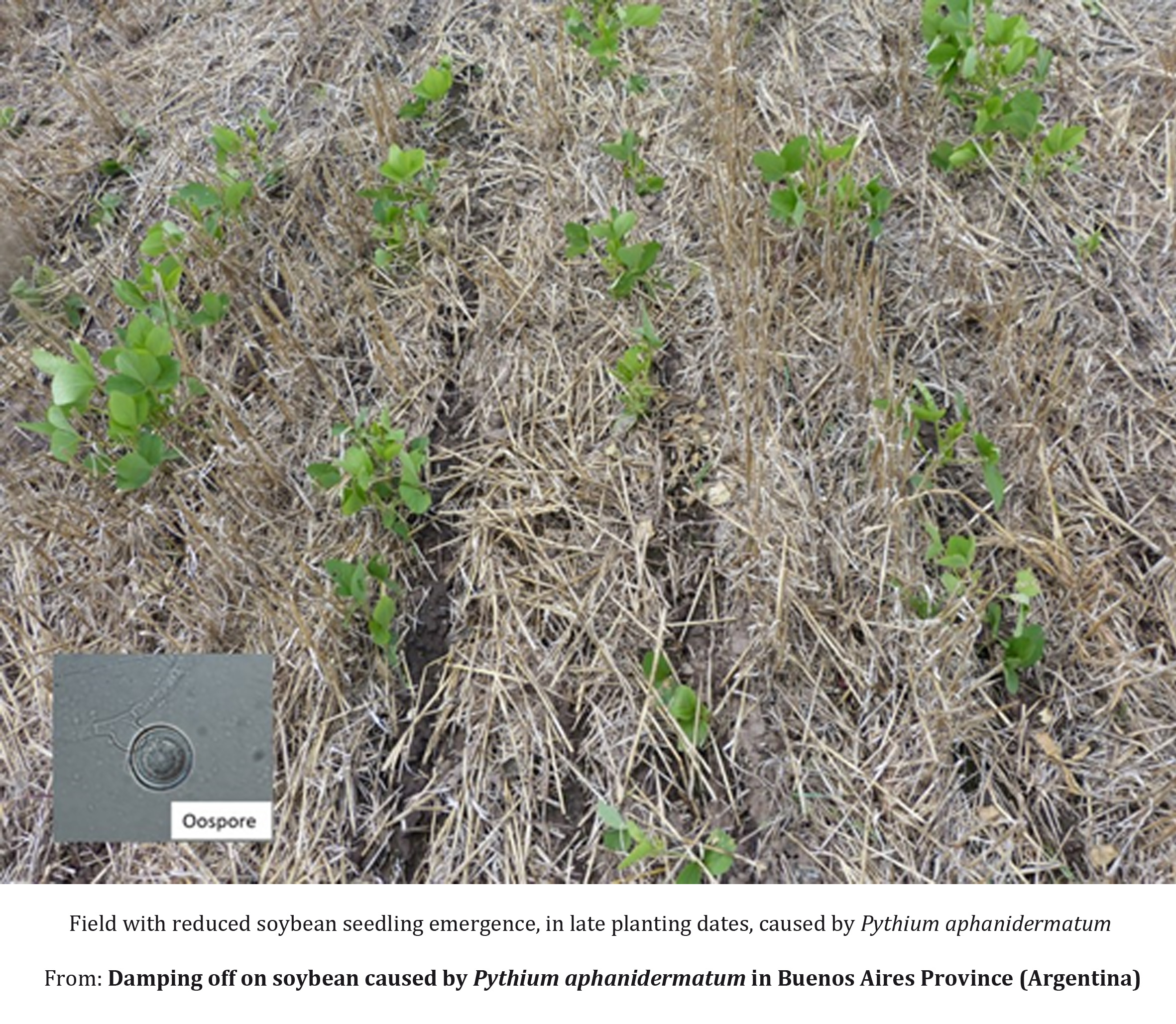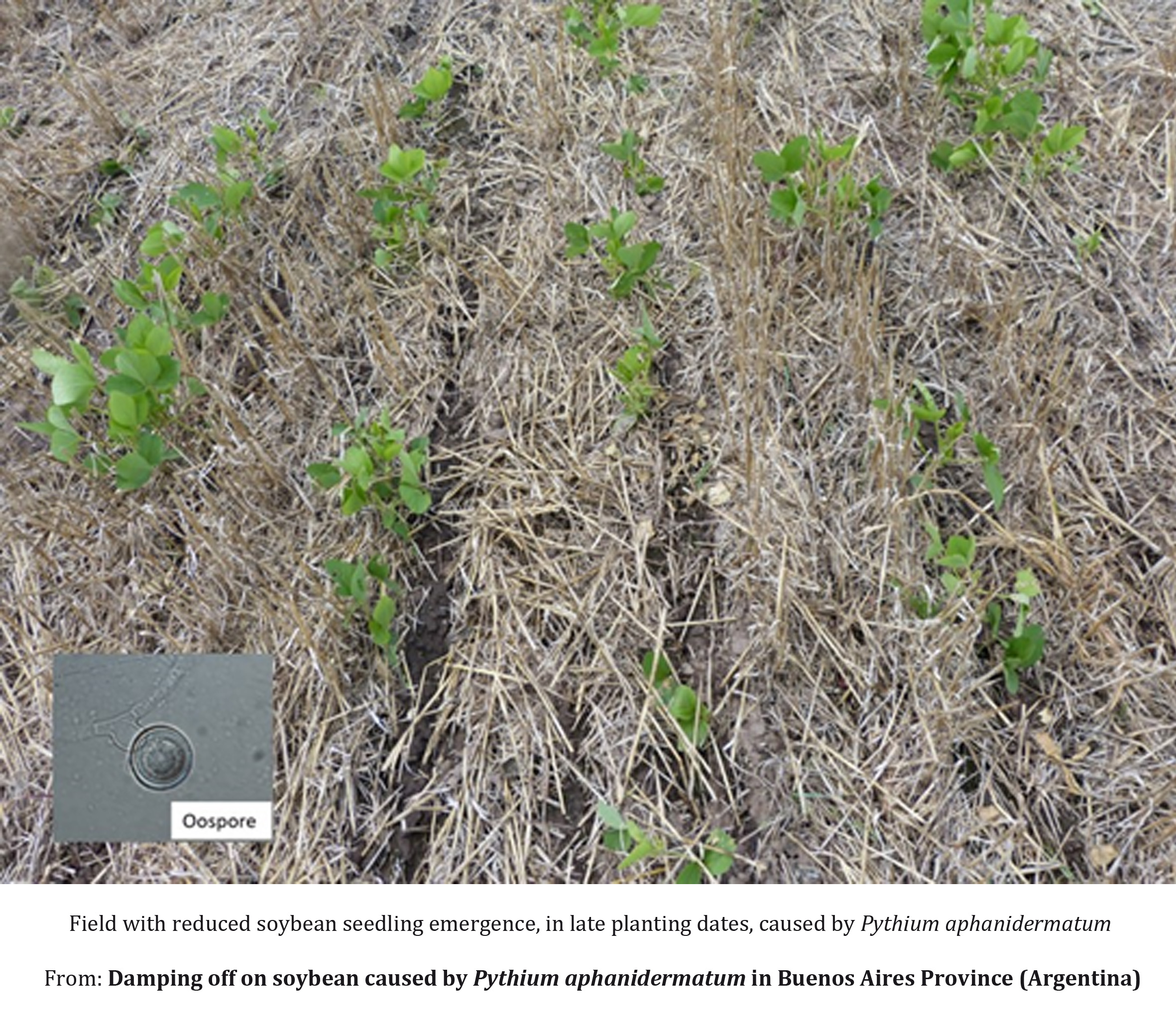Damping off on soybean (Glycine max) caused by Pythium aphanidermatum in Buenos Aires Province (Argentina)
Palabras clave:
oomycetes, podredumbre de raíz, tasa de crecimiento, patogenicidad, temperaturaResumen

Pythium aphanidermatum has a cosmopolitan distribution in the warmer parts of the world. The aim of this study was to identify the causal agent of damping off in soybean seedlings on late planting dates under hot conditions, from different locations in Buenos Aires province. The isolates induced different levels of plant and seedling death and growth rate at different incubation temperatures (15, 25 and 35ºC). In accordance with morphological, cultural and molecular characteristics, the pathogen was identified as P. aphanidermatum, and this is the first report of this oomycete causing soybean root and stem rot in Buenos Aires province, Argentina.
Highlights
- Pythium aphanidermatum was recovered from commercial fields of different localities from northern Buenos Aires province and southern Entre Rios province.
- Temperatures of 35 ºC constitute predisposing conditions and caused the higher percentage of dead seedlings and at temperatures of 15 ºC P. aphanidermatum did not affect the seedlings, being almost not pathogenic at this temperature.
Descargas

Descargas
Publicado
Cómo citar
Número
Sección
Licencia
Aquellos autores/as que tengan publicaciones con esta revista, aceptan las Políticas Editoriales.










.jpg)




